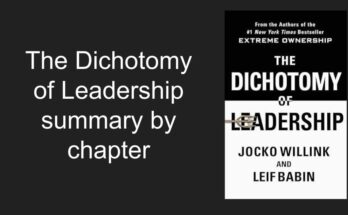In this blog about, on becoming a leader summary by chapter, I will share how it changed my views about leadership.
On becoming a leader summary by chapter
Over the past few weeks, I’ve been diving deep into On Becoming a Leader by Warren Bennis.

It’s one of those timeless books that doesn’t just talk about leadership—it changes how you see yourself and your potential to lead.
Here’s my reflection on what stood out to me, what made me pause, and what I plan to carry forward. Enjoy this on becoming a leader summary by chapter.
On becoming a leader chapters list.
- Mastering the Context
- Understanding the Basics
- Knowing Yourself
- Knowing the World
- Operating on Instinct
- Deploying Yourself: Strike Hard, Try Everything
- Moving Through Chaos
- Getting People on Your Side
- Organizations Can Help—or Hinder
- Forging the Future
Let’s dive into on becoming a leader summary by chapter.
Chapter 1 Mastering the context
As I read this chapter, I realized how often we let our environment dictate our growth. Bennis stresses that while our context shapes us, true leaders rise above it. That resonated deeply.
- I learned the importance of recognizing the forces around me but not letting them define me.
- Bennis talks about four steps: becoming self-expressive, listening to your inner voice, learning from mentors, and committing to a vision. For me, this means being honest about what drives me and aligning my actions with it.
Four steps to mastering context:
- Become self‑expressive
- Listen to your inner voice
- Learn from right mentors
- Commit to a guiding vision

Leadership isn’t about reacting to change, but proactively shaping it.
Chapter 2 Understanding the basics
This chapter outlined the essential traits of a leader. It made me reflect on the difference between having a job title and actually being a leader.
- Bennis talks about having a guiding vision and passion. I asked myself—”what’s my bigger why?”
- Integrity, trust, curiosity, and daring: these are all traits I admire and want to cultivate further.
- One line stayed with me: Managers do things right; leaders do the right thing. That’s a powerful distinction.
Leadership isn’t inherited—it’s made. Key ingredients are:
- Guiding Vision – clarity of purpose and persistence
- Passion – deep love for work that inspires others
- Integrity – honesty, self‑knowledge, and maturity
- Trust – earned through consistent character
- Curiosity & Daring – willingness to take risks and learn from failure
Chapter 3 Knowing yourself

If there’s one lesson I keep encountering again and again in life, it’s this: self-awareness is everything.
- Bennis argues that leadership is really about becoming more of who you already are. That hit home.
- It reminded me that my quirks, strengths, even my failures—they’re all part of what makes me unique. My job is to own them, refine them, and use them to serve something bigger.
Chapter 4: Knowing the World
This chapter pushed me to think about how I learn and interact with the world around me.
- I realized I often default to maintenance learning—doing what’s required. But real growth comes from shock learning—moments that shake you.
- Bennis urges leaders to engage in innovative learning—being curious, present, and adaptable. That’s something I want to work on, especially in high-pressure situations.
Two modes of learning:
- Maintenance learning – routines, rules for known circumstances
- Shock learning – transformative learning when norms are disrupted
Effective leaders lean toward innovative learning: anticipation, participation, active engagement.
Chapter 5: Operating on Instinct
Trusting my gut has led me to some of the best decisions in life—and also some tough lessons.
- Bennis talks about using instinct in a focused way—not as a shortcut but as a form of deep intelligence.
- Simplicity doesn’t mean shallow. Leaders can take complex ideas and make them clear without oversimplifying.
- This chapter reinforced the idea of deploying all of me—skills, values, intuition—in everything I do.
Chapter 6: Deploying Yourself – Strike Hard, Try Everything
Here, Bennis encouraged a full commitment to growth through experience.
- I took away that setbacks and even failures are crucial. I’ve learned the most when I was knocked off balance.
- He talks about letting the true self emerge, even if it’s uncomfortable. I realized I sometimes hold back my voice in fear of judgment. That needs to change.
- The idea of negative capability—being okay with uncertainty—really resonated. I’m learning that not having all the answers is okay, as long as I keep showing up.
Chapter 7: Moving Through Chaos
This chapter was both sobering and empowering.
- Chaos is inevitable, but leaders grow from it. I could relate this to several personal and professional moments where confusion led to breakthroughs.
- Instead of resisting chaos, Bennis encourages leaning into it and mining it for insight. That mindset shift is something I’m actively trying to implement.
Chapter 8: Getting People on Your Side
Leadership isn’t a solo game—it’s about connection.
- This chapter reminded me that people follow authenticity, not authority.
- Empathy, consistency, and trust-building aren’t optional—they’re the heart of leadership.
- I’m focusing more on listening deeply and making sure my actions align with my words.
Chapter 9: Organizations Can Help—or Hinder
This chapter made me reflect on the systems I’m part of.
- Bennis emphasizes how culture either nurtures or stifles leadership.
- I realized that one of the most valuable things a leader can do is create a space where others feel empowered to grow.
Chapter 10: Forging the Future
The final chapter felt like a call to action.
- Bennis talks about shaping the future, not just predicting it.
- Leaders need to embrace dissent, encourage innovation, and stay grounded in values.
- I’m committing to being someone who listens, experiments, and evolves—while staying true to what matters most.

Becoming a leader, per Warren Bennis, is a lifelong journey of self-invention, vision, and integrity. Leadership isn’t about position—it’s about intentional growth, relationship building, and the courage to act. True leaders don’t set out to prove—they strive to express.
On becoming a leader summary by chapter video


